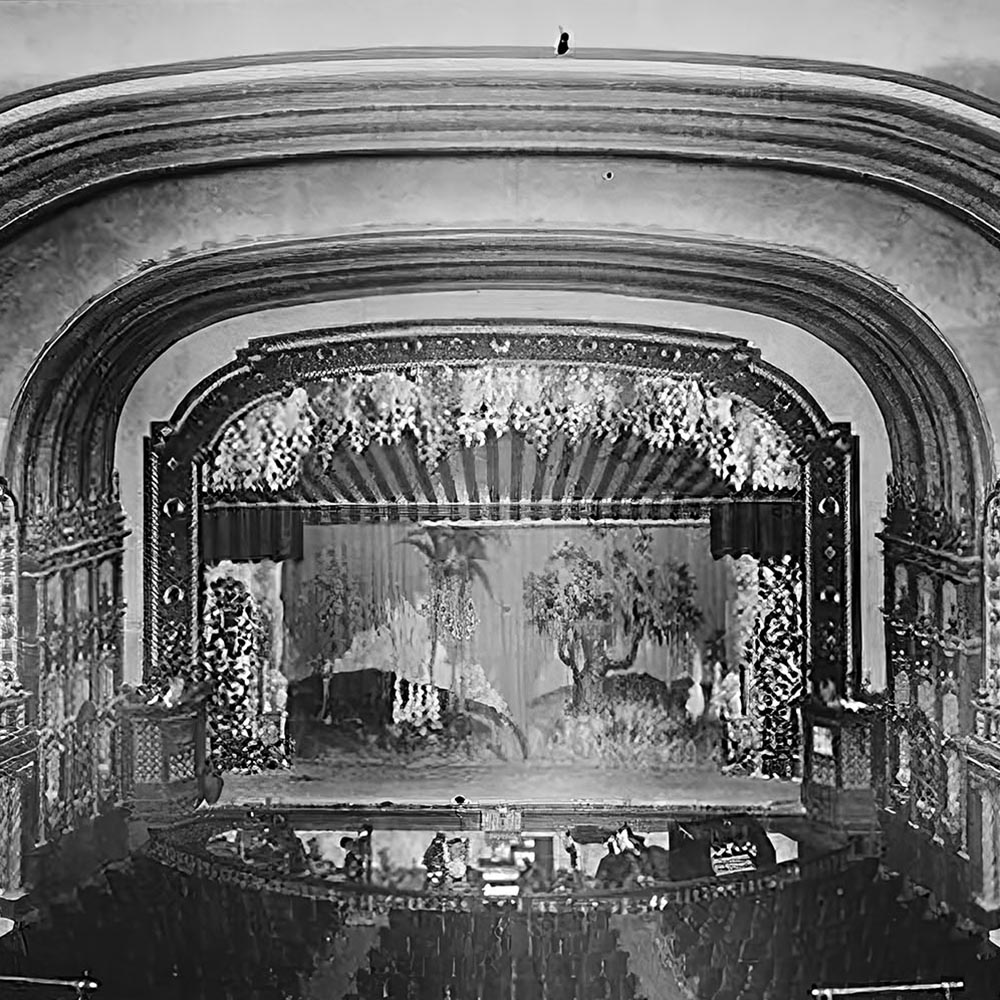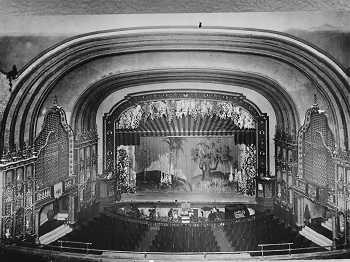
<< Go Back up to Atmospheric Theatres Main Page



The 2,500-seat theatre opened in late November 1925, built by Maximillian Dubois’ construction company “Max and Sons” for Charles J. Wolf and Vern U. Young of the Gary Theatre Company, which already owned the Gary, Orpheum, and Broadway theatres in the city.
Opening night was five headline vaudeville acts followed by The Only Thing (1925)  starring Eleanor Boardman and Conrad Nagel. The theatre’s Kilgen “wonder” pipe organ was debuted by organist Al Carney.
starring Eleanor Boardman and Conrad Nagel. The theatre’s Kilgen “wonder” pipe organ was debuted by organist Al Carney.
At its opening it was noted that the auditorium was a “perfect illusion of a Spanish and Moorish garden under a beautiful star-lit sky, soothed with dreamy drifting clouds”. Newspaper reports went on to say that the effect was so entrancing that “one almost forgets to watch the show”!
Gary’s fortunes, and the Palace Theatre’s, have risen and fallen with those of the steel industry. The town was founded in 1906 by U.S. Steel as a home for its new plant and for many years the growth of the steel industry brought prosperity to the town. However, in the 1960s, the City of Gary headed into decline, just like many U.S. cities that were reliant on one particular industry. Sadly, the theatre followed suit and shut in 1972.

According to the After the Final Curtain  website, in 1975 the theatre reopened as the Star Palace Theatre however closed again when the owner could not pay the bills. In 1976 it reopened as the Star Academy of Performing Arts and Sciences but shuttered soon after.
website, in 1975 the theatre reopened as the Star Palace Theatre however closed again when the owner could not pay the bills. In 1976 it reopened as the Star Academy of Performing Arts and Sciences but shuttered soon after.
In 1987, private investors planned to spend over $500,000 to renovate the theater and the nearby storefronts, but eventually abandoned the deal after the first restaurant opened was unsuccessful.
The abandoned Palace Theatre has become a common symbol of urban decay and is a frequent subject of photography and urban exploration.
 Further Reading
Further Reading website, documenting the theatre’s decay in the early 2010s.
website, documenting the theatre’s decay in the early 2010s. .
. .
. photos of the Palace Theatre.
photos of the Palace Theatre. by Places That Were
by Places That Were  .
.Photographs copyright © 2002-2025 Mike Hume / Historic Theatre Photos unless otherwise noted.
Text copyright © 2017-2025 Mike Hume / Historic Theatre Photos.
For photograph licensing and/or re-use contact us here  . See our Sharing Guidelines here
. See our Sharing Guidelines here  .
.
| Follow Mike Hume’s Historic Theatre Photography: |  |
 |